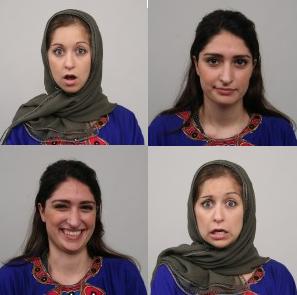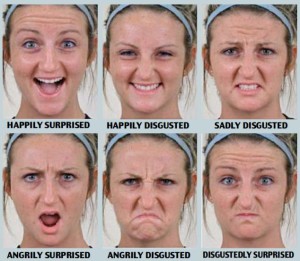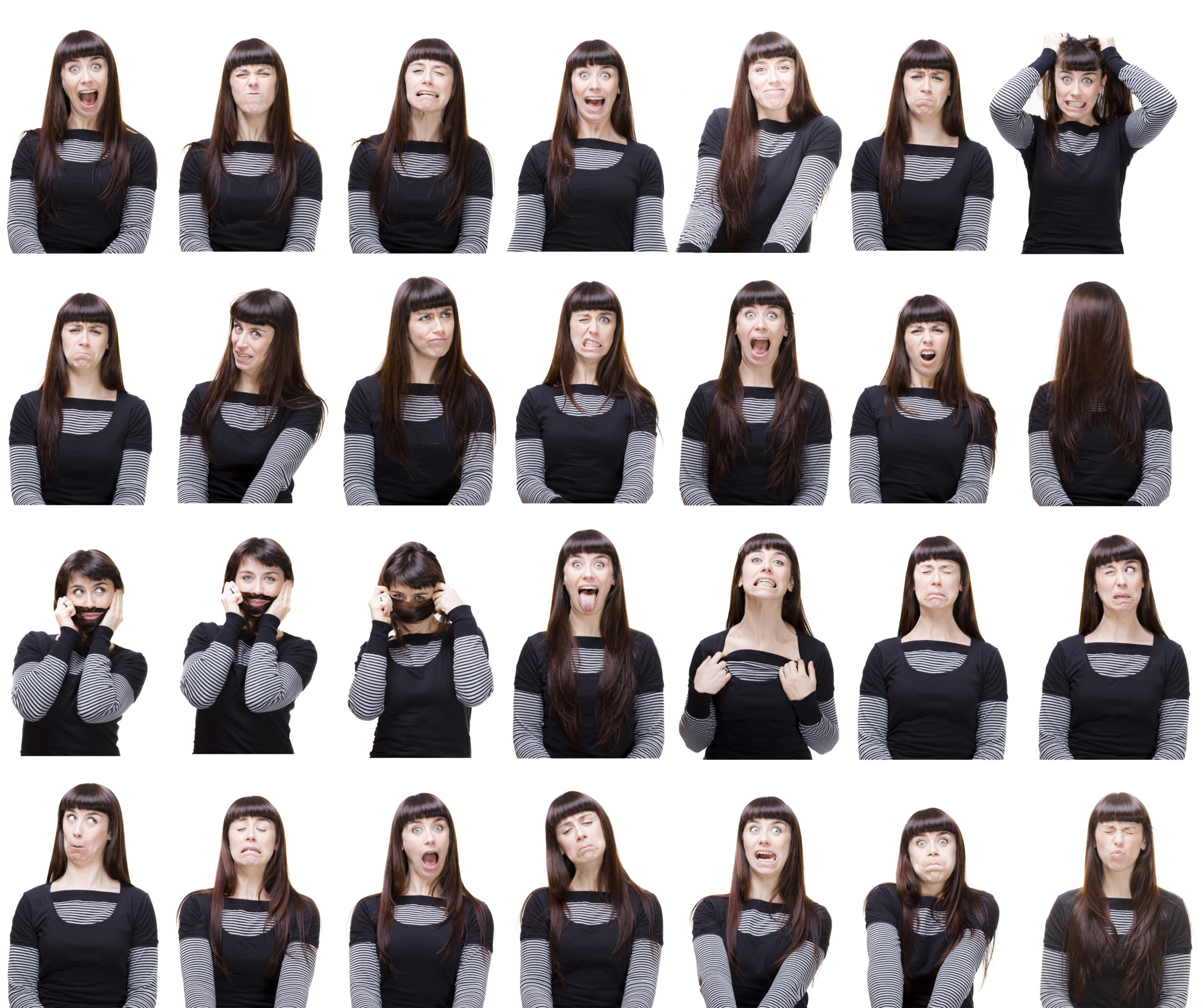 It’s not new, news that humans have a great many different facial expressions.
It’s not new, news that humans have a great many different facial expressions.
In fact, the face is the most complex nonverbal signal system in the body and it’s used to express many different kinds of mental states including
- Cognitive processes, concentration, confusion
- Facial emblems
- Signs of physical effort
- Signs of physiological states, fatigue, tiredness
- Signs of boredom, interest
- Emotion
It is also becoming more common knowledge that there are 7 universal facial expressions of emotion (anger, sadness, disgust, surprise, fear and happiness), which have been validated by numerous research studies.
21 Facial Expressions and Their Meanings

Mail Online has now reported that additional research, from Ohio State University, purports humans routinely and universally display 21 different facial expressions, of course this would include the 7 universal facial expressions as well as variations of them.
The researchers claim that these findings are 3 times as much as the long proven 7 universal facial expressions of emotion.
Lead researcher, Aleix Martinez, stated that his research goes beyond the research on universal facial expressions such as happy or sad.
230 volunteers were asked to depict 6 out of the 7 universal facial expressions of emotion. They were then asked to act out compound emotions after they were given time to practice making those compound emotions in a mirror.
The findings, published in the journal Proceedings of the National Academy of Sciences, noted that with higher than 90% accuracy individuals displayed the same facial expressions such as sadness and happiness, which has already been validated by previous research on the seven universal facial expressions of emotion.
How many unique facial expressions are there?
 The draw back to this new claim is that the facial expressions that are created are somewhat forced and not natural.
The draw back to this new claim is that the facial expressions that are created are somewhat forced and not natural.
Therefore, one cannot say for sure that the compound expressions each individual made (although possibly similar to the other volunteers) is what they would elicit in the real world without practice.
It is important to note that the research that validates the 7 universal facial expressions of emotion does not say that humans do not have any other facial expressions such as shyness or or any combination of the whole 7 universal facial expressions of emotions.
Dr. David Matsumoto, who has done extensive research in the field of facial expressions and FACS coding noted
I think by asking posers to create the expressions of the blended labels artificially forced them to create those faces. I seriously doubt that people would produce exactly those faces in real life. That’s one of the pitfalls of this area of research. You can’t reverse engineer what people actually do in real life by asking them to pose what they think they would do.
With these findings the researchers hope to gain a better understanding of human emotions and in turn possibly help treat conditions such as autism and post-traumatic stress disorder, as well as in the design of computerized aids for the disabled.